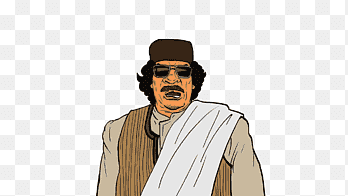Among modern Middle Eastern and African dictators, Muammar Gaddafi was among the most aggressive and divisive ones. His leadership distinguished over four decades of rule for economic reforms, authoritarian control, foreign tensions, and finally a spectacular demise during the Arab Spring.
Early Years and Emerging To Rule
Born 1942 into a Bedouin family close to Sirte, Libya, Muammar Gaddafi From a modest upbringing, Arab nationalism—especially with relation to Egypt’s Gamal Abdel Nasser’s ideas—much affected him. After serving in the military, Gaddafi later planned a September 1, 1969 coup against King Idris I, hence founding the Libyan Arab Republic.
Political philosophy and Gaddafi’s rule:
From 1969 until 2011, Gaddafi oversaw Libya, turning the nation into a socialist state grounded on his political philosophy—which he explored in his well-known book, The Green Book. Among his ideas were:
renouncing the kingdom and centralising under his authority.
nationalising Libya’s oil sector, thereby producing enormous national wealth for that nation.
pursuing socialist reforms, among other things, free education, healthcare, and housing projects.
advancing Arab nationalism through pan-Africanism to move forward a United States of Africa.
Although they raised Libya’s infrastructure and economy, his policies resulted in extensive political repression and violations of human rights.
Foreign Relations: Difficulties
In world politics, Gaddafi was a divisive person. His international policies generally ran against Western powers:
Libya was accused of terrorism, most memorably for the Lockerbie bombing with 270 people in 1988.
Western Sanctions: Libya suffered United Nations and US sanctions in the 1980s and 1990s.
Conflict with the United States: In reaction to purported terrorism, Libya in 1986 was bombed by the US.
2003 saw Gaddafi abruptly stop Libya’s nuclear weapon project, therefore promoting goodwill with Western nations.
2011 Arab Spring: Downfall of Gaddafi
2011’s Arab Spring in Libya witnessed rallies against Gaddafi’s regime burst forth. His administration answered with devastation that set up a full-scale civil war. NATO moved in support of rebel forces. Following months of conflict, Gaddafi was captured and assassinated in Sirte on October 20, 2011.
inheritance of Muammar Gaddafi
Gaddafi left behind a legacy that is still very controversial. While some applaud his economic successes and social policies, others recall his autocratic control and abuses of human rights. His demise left Libya in anarchy, given continuous conflict and unrest.
Only right now
Leader Muammar Gaddafi changed Libyan modern history drastically. His regime was unique in both persecution and expansion; his collapse created a power vacuum Libya today battles. Thought of as either a revolutionist or a tyrant, his influence on Libya and world affairs is indisputable.
